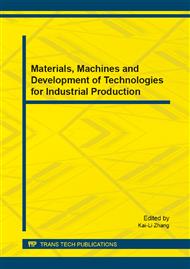p.146
p.150
p.154
p.159
p.164
p.170
p.175
p.180
p.184
Degradation of Azo Dye Wastewater by UV/TiO2 Combined with an Ultrasonic Procedure
Abstract:
The study combines the UV/TiO2 and an ultrasonic procedure to degrade the azo dye wastewater of Acid Yellow 17 and investigates the effects of various factors including the quantities of TiO2 and iron ions added on the efficiency of the removal of the azo dye wastewater of Acid Yellow 17. The experimental results reveal the a significant additive effects occurs through the combination of the two procedures under the 13 watts UV irradiations and 10 watts ultrasound. The analysis of the catalyst properties indicates that there are no evident changes of the appearance of the crystal and TiO2 catalyst when UV/TiO2 is combined with ultrasonic procedures. Since the formation of hydrogen peroxide (ND≦1 mg L-1) was not detected during the reactions, the additions of Fe (II) and Fe (III) are unable to induce the Fenton-like reaction effectively. Nevertheless, the additions of Fe ions significantly affect the degradation rate of the dye. Moreover, the effect of Fe (III) was found to be superior to that of Fe (II) under the same concentration.
Info:
Periodical:
Pages:
164-169
Citation:
Online since:
August 2014
Authors:
Keywords:
Price:
Сopyright:
© 2014 Trans Tech Publications Ltd. All Rights Reserved
Share:
Citation:


